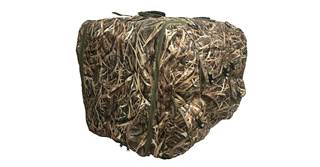
Short has other hunting destinations as well, including a 25-acre corn pond on the Congaree River. The rice field stays flooded through February, gets drained in March and planted in June. This simple impoundment attracts wood ducks, mallards, gadwall and sometimes green-winged teal. A 10-acre pond planted in rice is divided by a small creek that is used to flood the field. Look for ankle-deep water with very little current, and you have a good place to set up some decoys.”īill Short of Columbia likes to hunt over rice or corn his father introduced him to midlands impoundments more than 10 years ago. “Most hunters use the Poleyard Landing on Highway 17 North on the Santee River so they can hunt the river or Intercoastal Waterway to try and cut some ducks. Department of Natural Resources) offers wonderful waterfowl experiences for draw hunters on those properties,” he said.

“The old Santee Gun Club is now known as the Delta East and Delta West hunt units, and (S.C. By the beginning of March, he’s draining impoundments, burning off what remains in the fields, and getting busy planting corn, Japanese millet and rice at different times in order to produce various successive crops.Īn avid waterfowler who used to live on North Carolina’s famed Currituck Sound, Clark rarely hunts these days, although he still knows the tricks of the trade. His Bordeaux-Clark Group specializes in plantation management, and impoundment manipulation is a year-round job. Jim Clark of Georgetown plants more than 1,000 acres of duck impoundments in the Santee Delta, and he says that before the season ends, that food will be completely gone. Waterfowl Association and the National Wild Turkey Federation: planting and flooding chufa to attract waterfowl. A new trend in seed planting comes from both the S.C. Some examples of natural waterfowl vegetation are smartweed, terra-thump, giant foxtail millet and walter’s millet. Puddle ducks are only going to be in shallow water, and they are going to feed on plants like hydrilla, so if you really bust the ducks in one place, take a minute to notice what they were eating, because even if you don’t know what it is, you may recognize it later when considering a future hunting location.” “I generally only use mallard decoys, and I think a dozen decoys are plenty.

“I don’t want to bump birds EVER out of a resting area, because they are already skittish and may not return - so I use binoculars to watch for bird flight and stay clear of a good spot until Saturday morning. “Waterfowl are looking for sanctuary, and when they find it, they will stay put,” Rucker said. Like most waterfowlers in South Carolina, he hunts once or twice a week through the season, and he knows that in order to have a good hunt on Saturday morning on Lake Marion out of Low Falls Landing, he needs to scope out the area on Friday with a pair of binoculars. That’s when Rucker gets paid back, when he and Scout, his yellow Lab, are holding tight in their pop-up blind, waiting for just the right moment for him to shoulder his 12-gauge shotgun and start sending 3-inch loads of shot in the direction of the ducks.Ī member of the Ducks Unlimited’s Columbia chapter, Rucker has used the same tactics for years to try and fool ducks. Putting in the time to scout is preparation for the moment that all waterfowl hunters wait for, when the ducks are done circling and begin cupping their winds, dropping their feet and drawing the war cry - “Cut ’em, boys!”


 0 kommentar(er)
0 kommentar(er)
